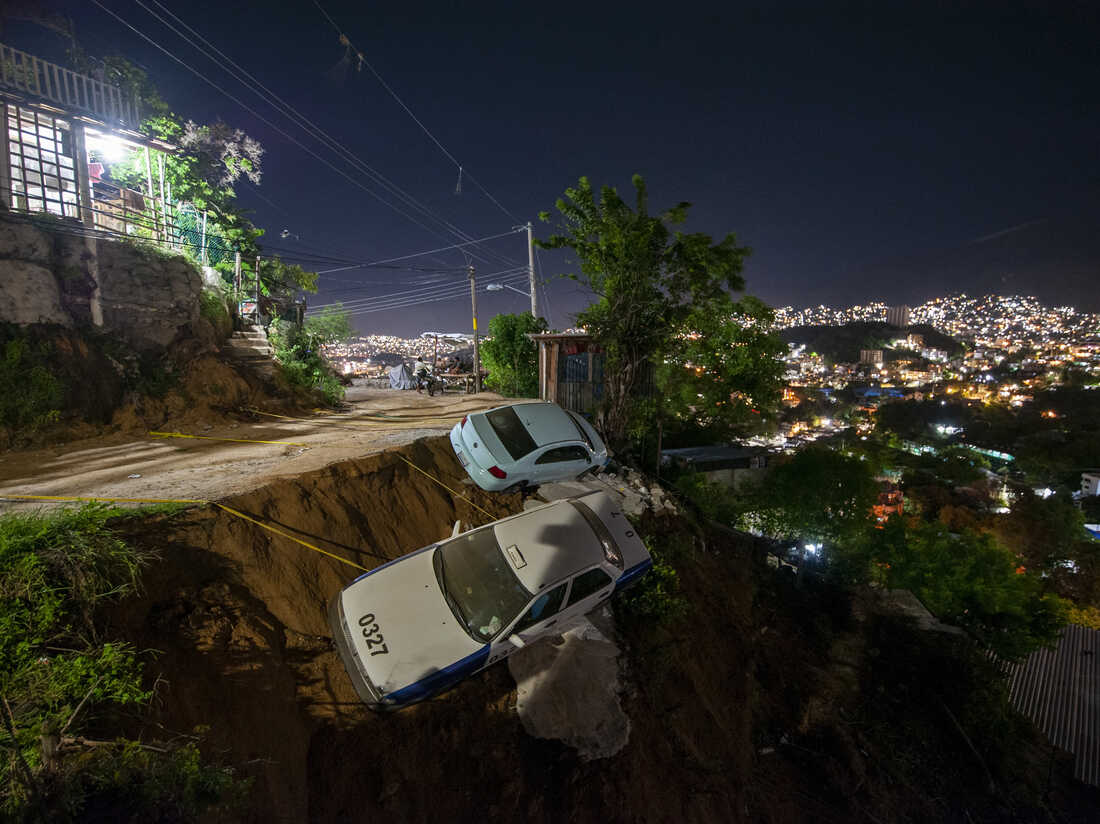
A magnitude 7.1 earthquake shook Acapulco, Mexico, on Wednesday. After the quake, Mexicans shared videos of bursts of blue lights streaking across the sky. Getty Images/Getty Images
Mexicans are sharing spectacular videos of bursts of blue lights seen streaking across the skies as a strong earthquake rocked the country's Pacific coast city of Acapulco on Wednesday.
The 7.0 magnitude quake struck some 11 miles northeast of the resort city in the southwestern state of Guerrero. At least one person was killed, buildings were damaged and rockslides littered a major highway, but the temblor didn't cause widespread damage.
It did rattle nerves though.
Felt some 200 hundred miles away in Mexico City, and lasting nearly a minute, residents fled into the streets as buildings swayed, sidewalks undulated and the blue lights burst brilliantly in the sky.
Twitter users posted videos of the blue flashes.
Este es el momento en el que se observaron las luces en el cielo esta noche, durante el #sismo registrado en #Acapulco, #Guerrero pic.twitter.com/Xeg2BZzF28
— Foro_TV (@Foro_TV) September 8, 2021
Soon users started using the hastag "Apocalipsis," Spanish for the biblical term denoting the end of the world, apocalypse.
Un pequeño ensayo del apocalipsis. 🤭 pic.twitter.com/ljTcD0DNN5
— Dios (@Dios_Padre) September 8, 2021
It's a phenomena that occurs somewhat regularly
Rutgers University Physicist Troy Shinbrot says not to worry — the blue lights are not a sign of the world coming to an end.
"If it did, the apocalypse would have happened a thousand years ago when this was first discovered," said Shinbrot. In an interview with NPR, he said the phenomena of so-called earthquake lights has been recorded historically and occurs fairly regularly.
Some scientists believe the eruption of light, or luminosity, is caused by the friction of rock near Earth's crust, which releases energy into the atmosphere. The flash of light is produced near the planet's surface.
Shinbrot has tried to recreate the phenomena in his lab and says he has measured voltage changes similar to what happens when the Earth's crust slips in an earthquake.
He urges the scientifically curious to take a roll of adhesive tape into a dark closet and quickly peel back a strip. Shinbrot says a glow of light will be emitted. But he cautions not to relate "earthquake lights," or EQL, and the adhesive tape experiment too closely, since there is still a lot scientists don't know.
There's disagreement about what actually causes the flashes
The U.S. Geological Survey makes that clear on its website, stating, "Geophysicists differ on the extent to which they think that individual reports of unusual lighting near the time and epicenter of an earthquake actually represent EQL."
National Autonomous University of Mexico seismologist Victor Manuel Cruz Atienza does believe in the phenomena, but says last night's sky was full of a lot of electrical activity from a rainstorm.
"We can't for sure associate the earthquake with the light show we saw last night, especially given the rainstorm we were experiencing," he told NPR. He said it was difficult for him to distinguish the difference on several videos he saw making the rounds on social media.
But both scientists agree there will likely be more chances to see the blue flashes across Mexico's skies. And many Mexicans are pointing out that most probably will happen during the month of September sometime. That's when many of Mexico's greatest quakes have hit, including a 8.2 magnitude temblor that struck the state of Oaxaca exactly four years ago on September 7, 2017. Mexico City's destructive 1985, 8.0 quake also hit on September 19th of that year.
That got Twitter users abuzz renaming the month, Septiemble, a combination of "September" and "Tremble" in Spanish.
"in" - Google News
September 09, 2021 at 09:11AM
https://ift.tt/3l72kEX
First Came A Quake In Mexico, Then Strange Blue Lights. People Feared The Apocalypse - NPR
"in" - Google News
https://ift.tt/2MLa3Y1
https://ift.tt/2YrnuUx
Bagikan Berita Ini














0 Response to "First Came A Quake In Mexico, Then Strange Blue Lights. People Feared The Apocalypse - NPR"
Post a Comment